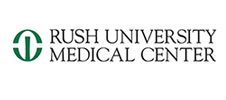Revision Rotator Cuff Repair
Dr. Garcia demonstrates his advanced technique for “over the top” rotator cuff repair
Dr. Garcia demonstrates the new cuffmend rotator cuff augmentation technique.
Anatomy:
Rotator cuff is the group of tendons in the shoulder joint providing support and enabling wider range of motion. Major injury to these tendons may result in tear of these tendons and the condition is called as rotator cuff tear. It is one of the most common causes of shoulder pain in middle aged adults and older individuals. It may occur with repeated use of arm for overhead activities, while playing sports or during motor accidents. Rotator cuff tear causes severe pain, weakness of the arm, and crackling sensation on moving shoulder in certain positions. There may be stiffness, swelling, loss of movements, and tenderness in the front of the shoulder.
What is a re-tear of the tendon?
When the rotator cuff is torn and continues to be painful a surgeon will repair the tendon. Unfortunately, not all repairs heal and some data suggests the number may be as high as 20%. If the repair fails, patients may continue to experience pain after their repair. This can occur shortly after the first surgery or can take years to present. If this occurs a revision rotator cuff repair may be needed. Dr. Garcia has significant experience with revision shoulder procedures and has pioneered some of the new rotator cuff techniques.
When the rotator cuff re-tears it can be a partial or full re-tear. If a partial tear is found non-operative treatment is usually tried but may be unsuccessful. For these failed patients and full thickness re-tears, Dr. Garcia will offer an arthroscopic approach to revise the previous surgery. This arthroscopic approach improves overall outcomes after revision surgery with less pain and faster recovery time.
Rotator Cuff Tears And Surgical Options
Rotator Cuff Repair with Cuffmend and Tissuetak Augment
When do you need a revision rotator cuff repair?
Unfortunately, not all repairs are the same. Some rotator cuff repairs fail for a number of reasons including; poor tissue quality, surgical technique, or a missed tendon injury. In some cases, patients can suffer a traumatic injury and re-tear their previous rotator cuff repair. The tendon can tear from the site it was attached to on the bone and tear as a result of the repair through the old sutures at the mid-substance of the tendon. If a re-tear is found, surgical fixation is usually recommended.
A revision rotator cuff shoulder surgery is a more difficult procedure to perform. You need to see a surgeon with extensive experience in this field who has all back up options available. There is usually more scar tissue involved and old suture and anchor material, so careful dissection and arthroscopic techniques are needed to improve outcomes.
The key to any good revision rotator cuff repair is to identify the issue with the old tendon and find good healthy tissue. Dr. Garcia uses arthroscopic techniques to diagnosis the problem and can use advanced techniques to repair these scarred and torn tendons. If the tendon quality is poor, Dr. Garcia has advanced training in using rotator cuff patches and will augment the patient’s tissue with one of these cutting-edgepatch techniques. The data has shown significant improvement in revision rotator cuff rates with your surgeon is able to identify and use patches to reinforce the rotator cuff tissue.
If the re-tears are larger, Dr. Garcia may combine his repair with another advanced technique called a superior capsular reconstruction. Dr. Garcia has lectured on this topic and continues to have a large research interest in improving outcomes for these patients.
Dr. Garcia demonstrates cutting edge technique for arthroscopic patch augmentation for revision RCR
It is important when a revision rotator cuff repair is being considered, to see a surgeon who feels comfortable with revision surgeries, augmentation and potentially a superior capsular reconstruction to make sure all potential options are available. Dr. Garcia will discuss his custom approach to your revision rotator cuff repair at your surgical consultation.
Recovery
Recovery after revision rotator cuff repair is slightly longer than regular repairs and depends if augmentation with a patch was needed. In general, 6 months is a usual recovery time, but in patients with more than one rotator cuff repair failure it may take up to 1 year for full recovery. For more information on physical therapy after surgery, see Dr. Garcia’s section under post-operative rehab protocols.

















